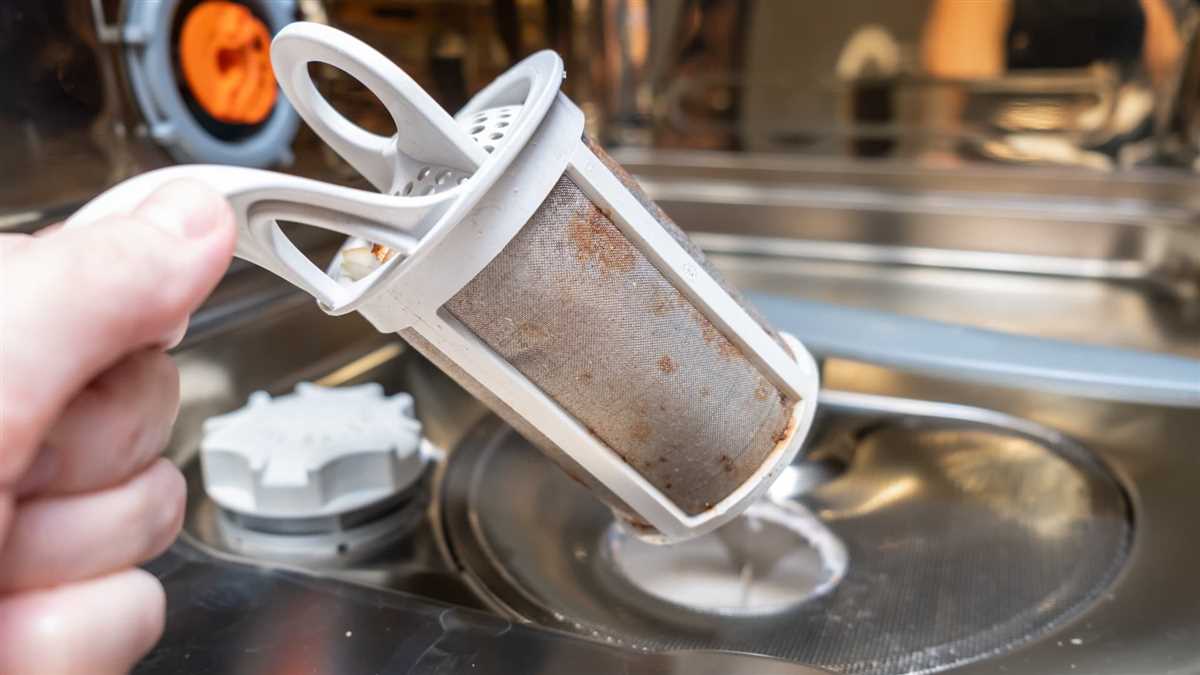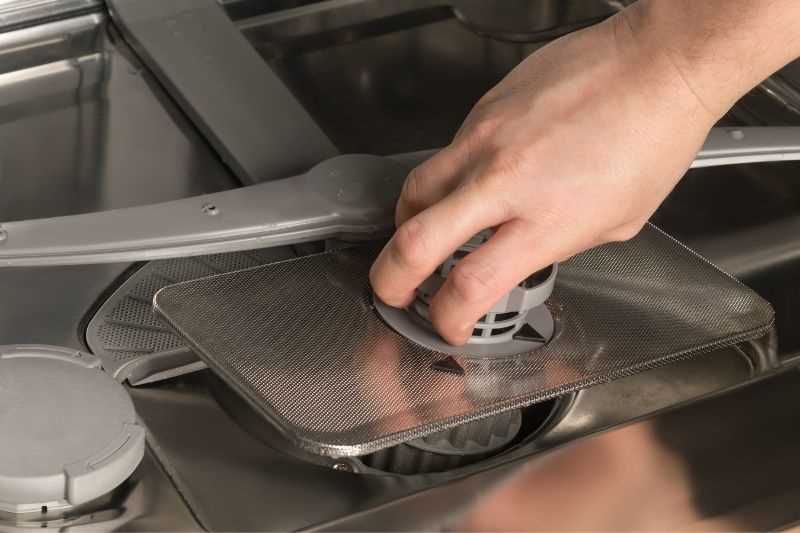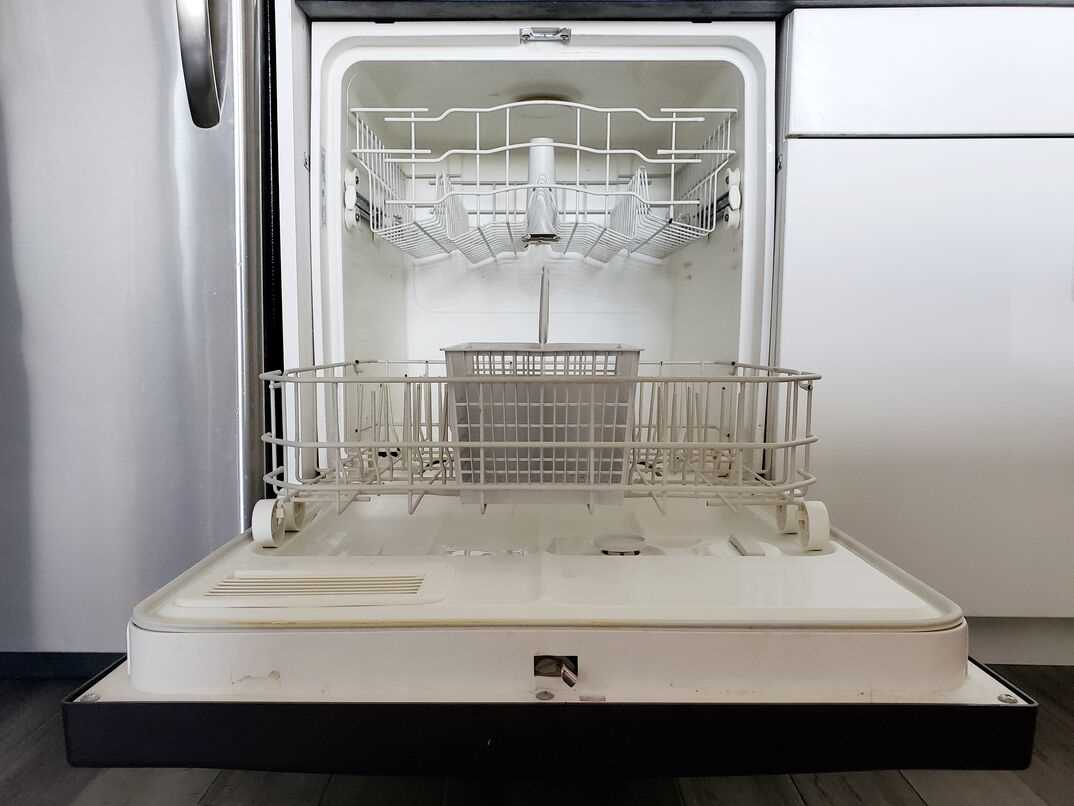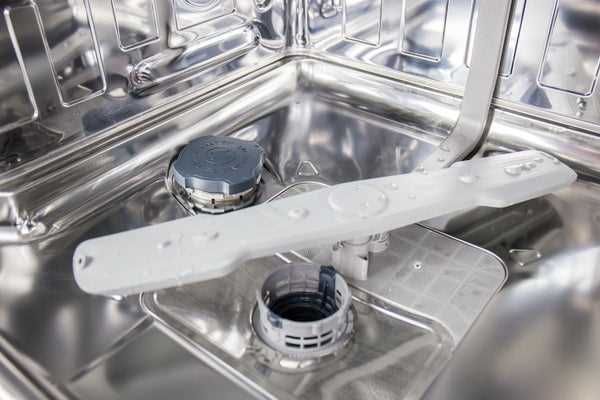




Having a clogged dishwasher drain is a common household problem that can cause quite a headache. When your dishwasher isn’t draining properly, it’s not only a sign that something is amiss, but it can also prevent you from using your dishwasher at all. The good news is that there are steps you can take to fix the problem and get your dishwasher back up and running.
Before you begin unclogging your dishwasher drain, it’s important to understand what could be causing the blockage. Common culprits include food debris, gunk, and waste that has built up over time. However, the cause of the blockage can also be something more serious, such as a damaged sump or a malfunctioning dishwasher pump. If you’re not comfortable fixing the problem yourself, it’s always best to call in a professional dishwasher engineer.
If you’re up for the task and want to try unclogging your dishwasher drain on your own, here’s what you can do. Start by removing any surface debris from the dishwasher. Use a toothpick or a small brush to clean around the drain and remove any gunk that may be blocking it. Next, check the dishwasher baskets and spray arms to ensure they are free from any obstructions. If any parts are damaged, they should be replaced as soon as possible.
Once you’ve cleared the dishwasher of any visible blockages, it’s time to move on to the drain itself. If there’s standing water in the dishwasher, use a sponge or a bail to remove as much of it as possible. Then, locate the dishwasher’s drain and inspect it for any clogs. You may need to use a plunger to create suction and clear the blockage. If that doesn’t work, you can pour hot water or a mixture of baking soda and vinegar down the drain to break up any remaining debris.
After you’ve unclogged the dishwasher drain, run a cycle with hot water to ensure that everything is flowing freely. If you notice that the water still isn’t draining properly, it may be a sign of a more serious issue. In this case, it’s best to call in the experts to diagnose and fix the problem.
Remember, prevention is better than a cure when it comes to unclogging a dishwasher drain. To avoid blockages in the future, make sure to scrape off excess food from plates before loading them into the dishwasher. Using a dishwasher filter or trap can also help to catch any larger pieces of debris and prevent them from causing a blockage. Regularly cleaning and maintaining your dishwasher can go a long way in preventing any drainage issues.
In conclusion, unclogging a dishwasher drain can be a daunting task, but with the right steps and precautions, it can be easily resolved. By following the tips mentioned above, you can keep your dishwasher running smoothly and prevent any future blockages from occurring.
Identify the Problem
Before dealing with a blocked dishwasher drain, it is important to identify the problem. There are several common causes for a dishwasher blockage, and knowing the cause will help you determine the best solution.
- Check for a clog: The most common cause of a blocked dishwasher drain is a clog. Food particles, grease, and other debris can accumulate in the drain and prevent water from passing through.
- Inspect the propeller and impeller: Another possible cause of a blocked dishwasher drain is a malfunctioning propeller or impeller. These components spin to push wastewater out of the dishwasher, but if they are damaged or not working properly, the water may not drain effectively.
- Look for electrical issues: In some cases, an electrical problem may be preventing the dishwasher from draining. If the dishwasher’s electrical components are not functioning correctly, it can cause drainage problems.
Once you have identified the cause of the blockage, you can begin to perform the necessary steps to unblock your dishwasher drain.
Common Issues and Causes
If you’re experiencing problems with your dishwasher drain, there are a few common issues that could be causing the blockage. Identifying the cause is the first step in resolving the issue and getting your dishwasher back up and running.
1. Food particles and debris

One of the most common causes of a dishwasher drain blockage is the accumulation of food particles and debris. Over time, these particles can build up and clog the drain, preventing water from properly flowing out.
2. Clogged impeller

The impeller is responsible for spraying water around the dishwasher to ensure a thorough cleaning. If the impeller becomes clogged with food particles or other debris, it can result in poor drainage.
3. Bent or damaged drain hose

If the dishwasher drain hose is bent or damaged, it can restrict the flow of water and cause a blockage. Inspect the hose for any signs of damage and ensure it is properly connected to the drain or garbage disposal.
4. Standing water at the bottom
If you notice standing water at the bottom of your dishwasher after a cycle, this could be a sign of a clogged drain. Check for any visible clogs or obstructions that may be causing the water to accumulate.
5. Lack of cleaning maintenance
If you haven’t regularly cleaned your dishwasher, it may be more prone to clogs and drainage dilemmas. The build-up of mineral deposits, soap residue, and gunk can all contribute to a blocked drain.
6. Other issues
Other potential causes of a blocked dishwasher drain include a faulty dishwasher pump, a malfunctioning drain valve, or a problem with the dishwasher’s internal plumbing.
Conclusion
Understanding the common causes of a dishwasher drain blockage can help you identify and resolve the issue more effectively. By following the recommended tips and steps, you may be able to unblock your dishwasher drain on your own. However, if the problem persists or you’re unable to perform the necessary cleaning and repairs, it may be best to seek the assistance of a professional.
Remove and Clean the Filter
One common cause of a dishwasher blockage is a clogged filter. The filter is designed to trap food particles and prevent them from entering the drainage system. Over time, the filter can become bent or clogged, reducing its effectiveness and causing water to back up in the dishwasher.
To clean the filter, you will need to take the following steps:
- Locate the filter. It is typically located on the bottom surface of the dishwasher, near the drain. If you are unsure of the exact location, consult your dishwasher’s manual or contact the manufacturer.
- Carefully remove the filter by twisting or lifting it out. Be sure to handle it gently to avoid any damage.
- Inspect the filter for any debris or build-up. Use a toothpick or a soft brush to dislodge any food particles or gunk that may be stuck in the filter.
- Rinse the filter under hot water to remove any remaining residue. Be sure to remove all the debris and ensure that water flows freely through the filter.
- Once the filter is cleaned, place it back into the dishwasher, ensuring that it is properly aligned and secured.
Regularly cleaning the filter can help prevent blockages, improve the performance of your dishwasher, and extend its lifespan. If you notice any signs of a clogged drain or recurring drainage problems, it is recommended to clean the filter as a first step before trying other solutions or calling a professional dishwasher engineer.
Step-by-Step Guide to Cleaning the Filter

If your dishwasher isn’t draining properly or smells bad, it could be due to a clogged filter. Cleaning the filter is the first step you should take when dealing with a blocked dishwasher. Follow these steps to clear the filter and ensure proper drainage:
Step 1: Turn off the dishwasher
Before starting any work, make sure the dishwasher is turned off and disconnected from the electricity. Safety should always come first!
Step 2: Find and access the filter
The filter in most dishwashers is located at the base of the machine, below the spray arms. Look for a circular ring or cover that can be removed to access the filter. Refer to your dishwasher’s manual if you’re having trouble finding it.
Step 3: Remove and unclog the filter
Once you’ve located the filter, remove it carefully. You may need to unscrew it or simply lift it out. Check the filter for any blockages such as food particles, debris, or residue. Use a toothpick or a soft brush to gently remove these blockages.
Step 4: Rinse and clean the filter
After removing the blockages, rinse the filter with warm water to remove any remaining debris. You can also use a mild soap or vinegar solution for a more thorough cleaning. Be sure to rinse it well to remove any soap or vinegar residue.
Step 5: Reinstall the filter
Once the filter is clean and clear of any debris, put it back in place. Make sure it is securely fastened or screwed back in. Ensure that the filter is properly seated to prevent any leaks or issues when the dishwasher runs.
Step 6: Run a test cycle
With the filter cleaned and back in place, run a test cycle to check if the dishwasher is now draining properly. If it still doesn’t drain, there may be other causes for the blockage or the drain pump may need to be checked by a professional.
By cleaning the filter regularly, you can prevent blockages and keep your dishwasher running smoothly. It is recommended to clean the filter at least once every few weeks or as needed, depending on your dishwasher usage. This will help to ensure proper drainage and prevent any unpleasant smells or other issues.
Clear the Drain Hose
If your dishwasher is not draining properly, one of the possible causes could be a clogged drain hose. The drain hose is responsible for carrying dirty water from your dishwasher to the drain. Over time, food particles, grease, and other debris can accumulate in the drain hose, leading to a blockage.
To clear the drain hose, follow these steps:
- Turn off the power to your dishwasher. This is important for your safety, so make sure to unplug it or turn off the circuit breaker that supplies electricity to the dishwasher.
- If your dishwasher is currently running a cycle, wait for it to complete. If necessary, you can interrupt the cycle and manually turn off the dishwasher.
- Put on rubber gloves to protect your hands from hot water and any remaining debris in the drain hose.
- Locate the drain hose. It is usually connected to the back of the dishwasher and extends to the drain under your sink.
- Remove the hose from the dishwasher and sink drain. Make sure to have a bucket or a towel nearby to catch any standing water that may come out of the hose.
- Inspect the drain hose for any clogs or blockages. Use a flashlight if necessary to get a better view. If you see any debris, try to remove it using a long, flexible brush or a straightened wire hanger. Be careful not to damage the hose.
- If you are dealing with a stubborn clog, you can try using a solution of boiling water and vinegar. Sprinkle baking soda into the drain hose and then pour a cup of boiling water mixed with vinegar. Let the solution sit for about 15 to 30 minutes to break down the clog. Flush the hose with hot water afterwards.
- After clearing the clog, reattach the drain hose to the dishwasher and sink drain. Make sure it is securely fastened to prevent any leakage.
- Turn on the power to the dishwasher and run a short cycle to test the drainage. If the water drains properly, you have successfully unclogged the drain hose.
By following these steps, you can effectively clear a clogged drain hose in your dishwasher. However, if the problem persists or if you are uncomfortable performing these tasks, it is recommended to seek the help of a professional dishwasher repair service.
How to Remove and Clear the Drain Hose
If your kitchen dishwasher drains water slowly or does not drain at all, it may be due to a clogged drain hose. Unclogging the drain hose is a simple task that can be done without causing any damage to your dishwasher or kitchen decor.
Here are the steps to remove and clear the drain hose:
- Turn off the electrical supply to your dishwasher. This is important to ensure your safety while working on the appliance.
- Locate the drain hose at the back of your dishwasher. It is usually a rubber tube that connects to the sink or garbage disposal unit.
- Disconnect the drain hose from the sink or garbage disposal unit. You may need to use pliers to loosen any hose clamps.
- Place a bucket or a towel under the disconnected hose to catch any remaining water.
- Check the drain hose for any debris or blockages. Use a straightened wire coat hanger or a small brush to remove any clogs.
- Fill a bucket with a solution of equal parts vinegar and boiling water. Dip the drain hose into the solution and let it soak for about 15-25 minutes to loosen any remaining debris.
- After soaking, rinse the drain hose with clean water to remove any remaining debris.
- Check the sink or garbage disposal unit for any blockages. If there are any, unclog them using a sink plunger or a plumbing snake.
- Replace the drain hose back into its original position, making sure it is securely connected to the sink or garbage disposal unit.
- Turn on the electrical supply to your dishwasher and run a test cycle to ensure the drain hose is functioning properly.
By following these steps, you can easily remove and clear the drain hose of your dishwasher. Remember to take the necessary precautions and seek expert help if you are unsure about any of the steps. It is always better to prevent blockages by regularly cleaning the drain hose and using drain cleaners once a week to keep your dishwasher running smoothly.
Use Household Items to Unblock the Drain
If you’re dealing with a clogged dishwasher drain, there are several simple and effective household items you can use to try and unblock it before calling a professional. By following these steps, you may be able to fix the issue and have your dishwasher draining properly again without having to spend any money.
Step 1: Remove any visible debris
Before attempting any cleaning, it’s important to remove any visible debris from the dishwasher drain. This can include waste food particles, broken glass, or any other objects that may be causing the blockage. Use a pair of rubber gloves to protect your hands and carefully remove any items you find.
Step 2: Use a stiff wire or toothpick

If you can access the drain area, use a stiff wire or toothpick to gently dislodge any blockages that may be present. Be careful not to push the blockage further down the drain, as this can make the problem worse.
Step 3: Sprinkle baking soda and vinegar
If the above steps do not completely unclog the drain, try sprinkling a generous amount of baking soda followed by vinegar into the drain. The baking soda and vinegar combination can help dissolve any remaining debris and clear the blockage. Let the mixture sit for several minutes before rinsing with hot water.
Step 4: Bail out standing water

If the dishwasher is not draining at all and there is standing water in the bottom, you may need to bail it out using a cup or container. Be careful when doing this to avoid any potential mess or contact with the dirty wastewater.
Following these steps should help you unblock your dishwasher drain and have it working properly again. However, if the issue persists or if you’re not comfortable performing these tasks yourself, it’s always best to call a professional technician or engineer to guide you through the process and fix the problem.
FAQ
What are some common signs that indicate a dishwasher drain is blocked?
Some common signs of a blocked dishwasher drain include standing water in the bottom of the dishwasher, slow drainage, strange odors, and gurgling sounds coming from the drain.
Can I use a plunger to unblock a dishwasher drain?
Yes, you can use a plunger to try and unblock a dishwasher drain. Make sure to cover the drain opening with the plunger and create a tight seal. Then, push and pull the plunger rapidly to create suction and dislodge the blockage.
What should I do if the plunger doesn’t work?
If the plunger doesn’t work, you can try using a plumbing snake or a wire coat hanger to physically remove the blockage. Insert the snake or coat hanger into the drain and gently push or twist it to dislodge the blockage. Be cautious not to damage the drain or any internal components.
Are there any homemade solutions I can try to unblock a dishwasher drain?
Yes, you can try pouring a mixture of baking soda and vinegar down the drain to break down and dissolve the blockage. Alternatively, you can mix hot water with salt and pour it down the drain to help remove the blockage.
When should I call in the experts to unblock a dishwasher drain?
If you have tried all the DIY methods mentioned above and the dishwasher drain is still blocked, it is advisable to call in the experts. A professional plumber will have the necessary tools and expertise to properly diagnose and unclog the drain without causing any damage to the dishwasher.
How can I prevent my dishwasher drain from getting blocked?
To prevent your dishwasher drain from getting blocked, make sure to scrape off any food debris from plates and utensils before loading them into the dishwasher. Run hot water in the sink before starting the dishwasher to help flush out any debris. Regularly clean the dishwasher and its filter to remove any buildup.












